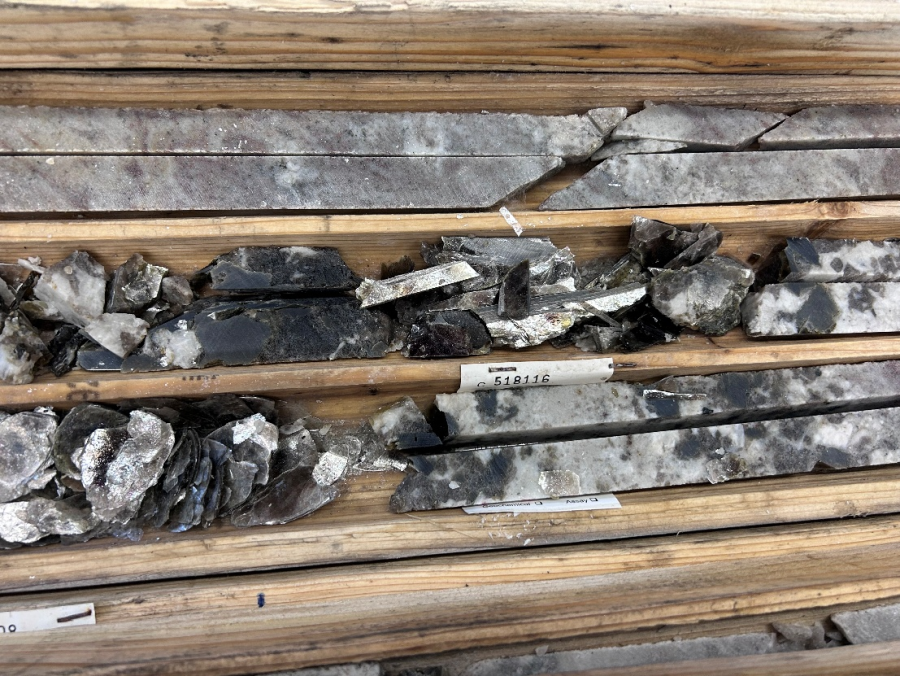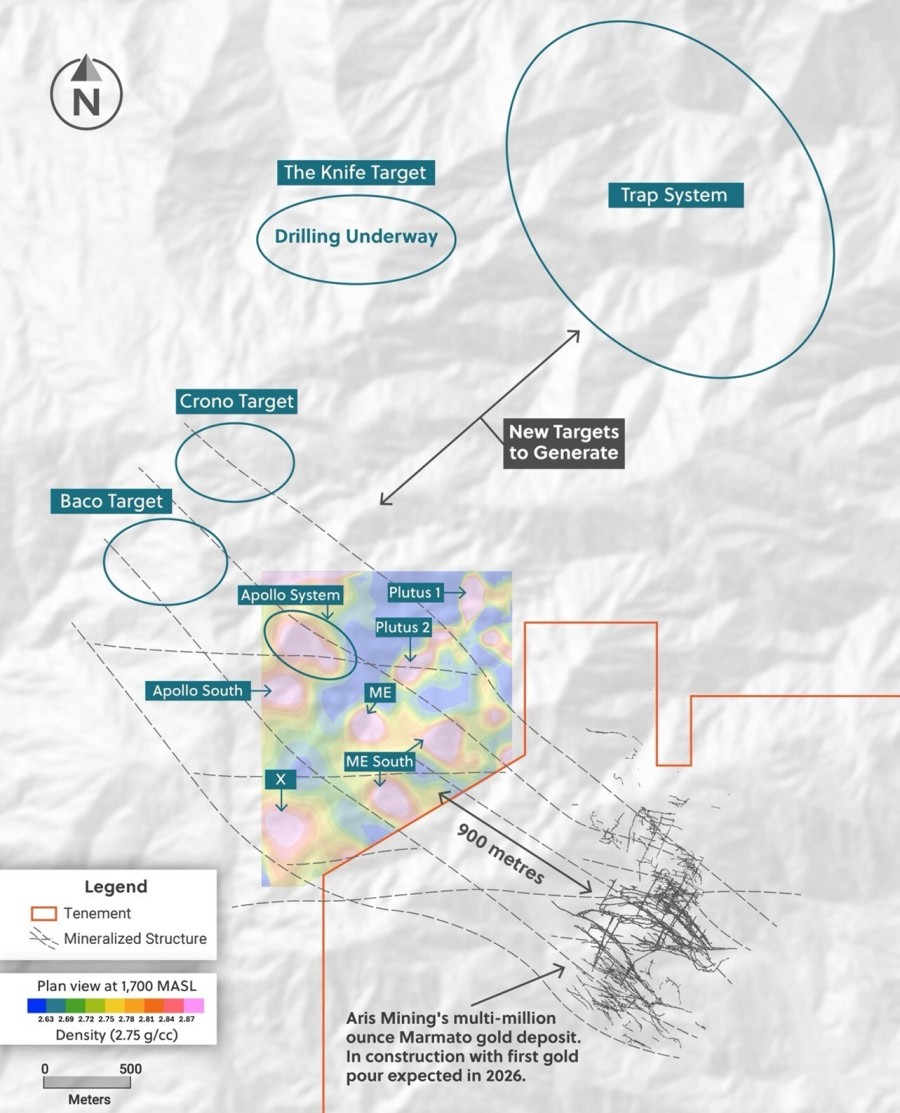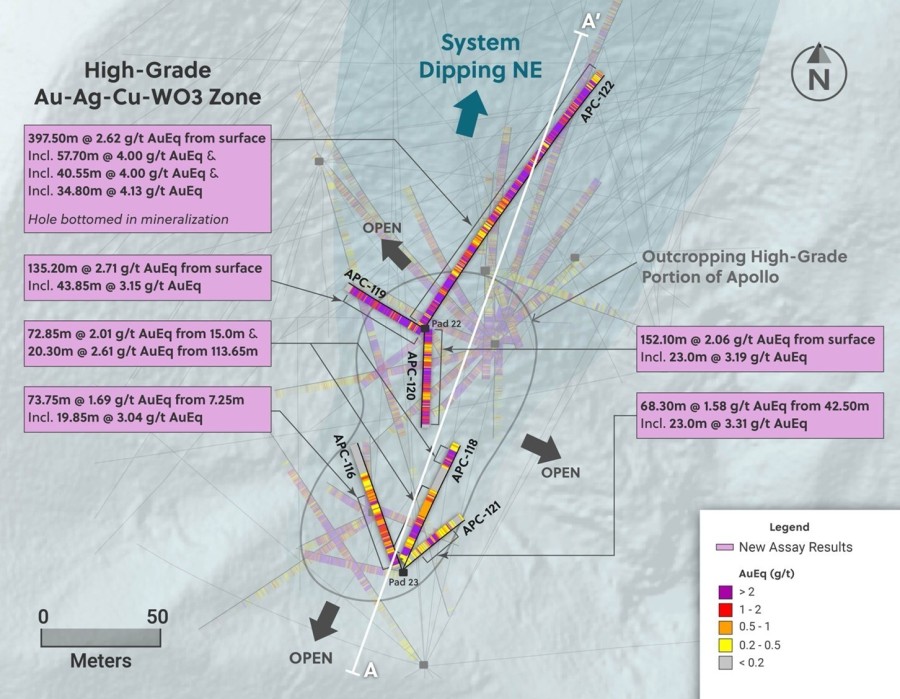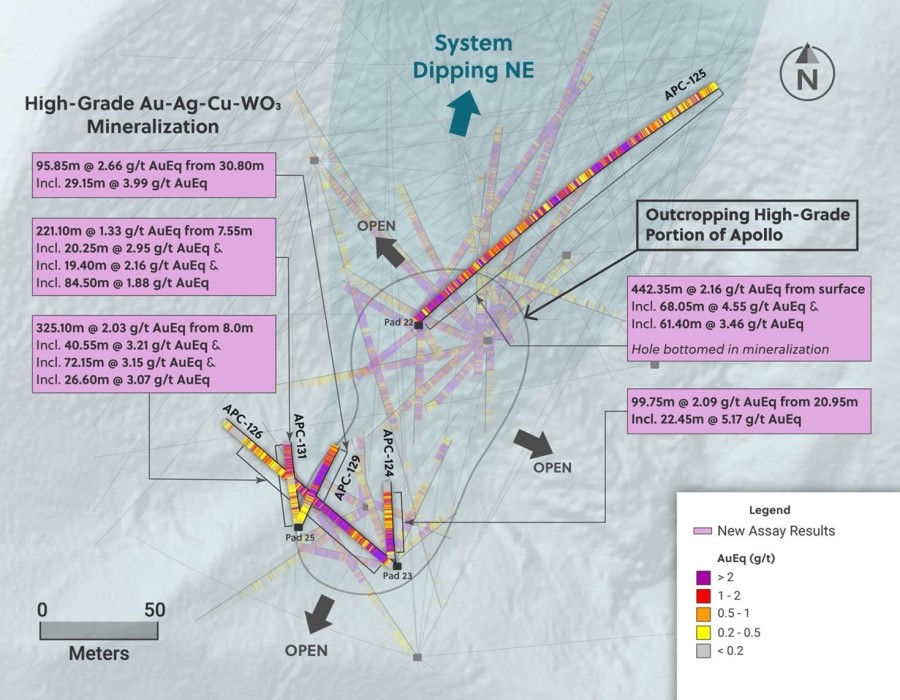Vancouver, BC – TheNewswire - July 25, 2025 – Quantum Critical Metals Corp. (TSX.V: LEAP | OTCQB: ATOXF | FSE: 86A1) ("Quantum" or the "Company") is pleased to announce that a core test sample from the NMX East has been submitted for metallurgical test work to SGS Lakefield, Ontario. The NMX East project is located in the Eeyou Istchee James Bay region of Québec.
In late June, a team sampled the core that was drilled in 2023 to make up a test sample for processing and metallurgy. The core had previously been cut in half, sampled and assayed. The assay results revealed anomalous gallium, rubidium and cesium which were reported on March 13, 2025 after assay results were re-evaluated due to changes in gallium supply worldwide (Click Here).
A sample weighing over 40kg was submitted which was taken from the remaining core from hole DNW 2023-03 from 8.92m- 116.5m. Since the core was previously cut in half, it was halved again resulting in two quarters, one quarter of the remaining core was sampled for submission to the laboratory, leaving one quarter of the core remaining in the box. Figure 1 shows the cut core ready for sampling.

The purpose of this test work is to investigate the mineralogical association of gallium, rubidium and cesium (and other elements), to process the core to isolate the minerals of interest, and to conduct proof of concept hydrometallurgy to extract these metals.
Quantum key developments to date:
-
Significant Critical Metals Discoveries
A detailed reassessment of drill core assays from both Québec projects has confirmed elevated and consistent intervals of gallium, rubidium, cesium, niobium, and tantalum. These results support the identification of two distinct gallium-rubidium-cesium mineralized systems within the Company’s portfolio.
-
Early Metallurgical Focus to Accelerate Recovery Assessment
Quantum is prioritizing mineralogical and metallurgical studies ahead of a formal resource estimate to evaluate the economic viability of metal recovery. This proactive approach aims to fast-track development and position the Company at the forefront of critical metal supply efforts in North America.
-
Innovative Gallium Recovery from Mica
Initial findings suggest gallium may be hosted in mica, a non-traditional source. While gallium is typically extracted as a byproduct of bauxite or zinc processing, historical studies show it can be recovered from mica using processing methods like floatation, followed by hydrometallurgy acid leaching techniques. The Company is engaging multiple laboratories to optimize this process.
-
Strengthening Domestic Supply Chains
In light of China’s December 2024 ban on gallium exports, Quantum’s discoveries represent a timely and strategic opportunity to support North American critical mineral independence. These metals are essential for high-tech applications, including semiconductors, telecommunications, defense, and renewable energy.
CEO Marcy Kiesman commented:
“While advancing metallurgy early in a project’s life cycle may be historically unconventional, it reflects our urgency and commitment to unlocking domestic sources of critical metals. We believe solving the processing piece first will accelerate the development of our assets and fill the global supply gap of these minerals.”
About Gallium
Gallium, a critical component in semiconductors, telecommunications, renewable energy sectors and may also be considered as a possible heat exchange medium in nuclear reactors. Canada and the USA rely on gallium for telecommunications, defense, and green energy. Gallium is also used in semiconductors, AI circuitry, radar and microchips and could be more critical than previously realized.
Source: Click Here
Gallium Market Size and Growth:
1. Market Size
In 2023, global high-purity gallium production was estimated at 320 tonnes, with total primary production capacity reaching 1,100 tonnes per year. Demand for gallium is projected to grow due to its role in semiconductors, 5G technology, and renewable energy applications.
2. Key Applications:
-
Semiconductors: Gallium arsenide (GaAs) and gallium nitride (GaN) are critical in chips for smartphones, satellite communications, and defense systems.
-
Renewable Energy: GaN is used in solar cells and LEDs.
-
Emerging Technologies: Gallium is a key component in next-generation technologies such as quantum computing, 5G networks, and advanced radars.
3. Geopolitical Considerations:
China has imposed export controls on gallium, exacerbating supply chain challenges for the U.S. and its allies. These restrictions are part of a broader trade conflict over critical technologies. Countries like the USA are ramping up efforts to develop domestic gallium sources and processing capabilities to reduce reliance on China.
Sources: https://pubs.usgs.gov/periodicals/mcs2024/mcs2024-gallium.pdf
About Rubidium
Today most rubidium is obtained as a byproduct of lithium and since it is easily ionized it can be used to propel spacecraft engines (ion). Rubidium’s critical role in emerging technologies and its limited supply make it a valuable strategic resource.
1. Market Size and Growth:
Rubidium is a niche market, with an estimated global annual consumption of less than 2,000 kilograms, primarily for high-tech applications. Prices for high-purity rubidium compounds are significant, often exceeding $1 million per tonne for rubidium oxide, driven by its rarity and specialized uses.
2. Applications:
-
Specialty Glass: Used in fiber optics and night-vision technology.
-
Telecommunications: Serves as an atomic frequency standard in GPS systems.
-
Quantum Computing: Ultra-cold rubidium atoms play a key role in quantum research.
-
Batteries: Potential use in sodium-ion batteries, an emerging alternative to lithium-ion technology.
3. Growth Drivers:
Advances in quantum computing and demand for robust, low-temperature battery technologies are expected to boost rubidium consumption. The inclusion of rubidium on critical minerals lists highlights its strategic importance, especially as global reliance on China’s supply raises supply chain concerns.
4. Geopolitical Factors:
China’s dominance in rubidium production and recent export restrictions have prompted countries like the U.S. and Australia to accelerate exploration and development of domestic resources.
Sources: https://www.mordorintelligence.com/industry-reports/rubidium-market
https://www.imarcgroup.com/rubidium-market
https://www.marketresearch.com/OG-Analysis-v3922/Rubidium-Outlook-Size-Shares-Data-36046807/
About Cesium
Cesium is a rare, silvery-gold alkali metal known for its high reactivity and unique properties. It plays a critical role in various high-tech applications, including atomic clocks, medical imaging, and oil and gas drilling operations. The global cesium market is experiencing steady growth, driven by its expanding use in these and other advanced technological fields.
1. Market Size and Growth:
The global cesium market was valued at approximately USD 363.58 million in 2024 and is projected to reach nearly USD 601.72 million by 2032, growing at a compound annual growth rate (CAGR) of 6.5% during the forecast period. This growth is driven by increasing demand in various high-tech applications and the element’s strategic importance.
2. Applications:
-
-
Medical Industry: Cesium isotopes are utilized in cancer treatment, particularly in brachytherapy for targeting specific areas with radiation.
-
Oil and Gas Industry: Cesium formate is employed as a high-density, low-viscosity drilling fluid, enhancing the efficiency of drilling operations.
-
Electronics: Cesium compounds are used in photoelectric cells, enhancing their efficiency and performance.
-
Atomic Clocks: Cesium’s precise frequency standards are fundamental in the operation of atomic clocks, which are critical for GPS systems and telecommunications.
-
Quantum Computing: Cesium atoms are explored for their potential in quantum computing applications, contributing to advancements in this emerging technology.
-
3. Growth Drivers:
The increasing importance of cesium in cancer treatments and its diversified applications across various industries are significant growth drivers. Additionally, the rising demand for cesium in petroleum extraction and advancements in quantum computing technologies contribute to market expansion.
4. Geopolitical Factors:
China’s dominance in the production and supply of cesium has raised concerns about supply chain vulnerabilities. Recent export restrictions by China on critical minerals have prompted other countries to seek alternative sources and develop domestic resources to ensure a stable supply.
Sources:
“Cesium Market Poised for Growth at 6.5% CAGR, Reaching USD 601.72 Million by 2032” – openpr.com
“Cesium Market to Expand by USD 3.57 Billion from 2024-2028, Driven by Growing Role in Cancer Treatment” – prnewswire.com, “China Imposes Export Controls on Medium and Heavy Rare Earth Materials” – hklaw.com
About Critical Metals
Critical metals are essential components in modern technologies, including renewable energy systems, defense applications, and advanced electronics. Both the United States and Canada have identified specific lists of critical minerals vital to their economic and national security. The U.S. Geological Survey’s 2022 list includes 50 critical minerals, while Canada in 2024 has designated 34 minerals as critical.
Recent geopolitical developments have heightened concerns over the supply chain security of these critical metals. China, which holds a dominant position in the production and processing of several critical minerals, has implemented export bans affecting the West. These actions underscore the strategic importance of diversifying supply chains and developing domestic sources for critical metals to mitigate geo-political risks and ensure the stability of essential industries.
About Quantum Critical Metals Corp.
Quantum Critical Metals Corp. (TSX.V: LEAP) (OTCQB: ATOXF) (FSE: 86A1) is a Canadian mineral exploration company focused on advancing critical metals projects that power next-generation technologies. With a growing portfolio of promising assets—including the NMX East Gallium-Rubidium-Cesium Project in Québec, the Discovery Gallium-Rubidium-Cesium and polymetallic project in Québec, the Victory Antimony Project in British Columbia, and the newly acquired Prophecy Germanium-Gallium-Zinc Project in British Columbia, among others, the Company is strategically positioned to support the West’s transition to a secure and sustainable critical metals supply.
To stay updated on Quantum’s latest developments, sign up for our mailing list and visit www.quantumcriticalmetals.com and www.sedarplus.com.
Marcy Kiesman, CEO
Telephone: 604.428.2900 or 604.339.2243
Email: This email address is being protected from spambots. You need JavaScript enabled to view it.
Website: www.quantumcriticalmetals.com
Forward-Looking Statements
This news release contains “forward‐looking information or statements” within the meaning of applicable securities laws, which may include, without limitation, statements that address the upcoming work programs, and other statements relating to the business, financial and technical prospects of the Company. All statements in this news release, other than statements of historical facts that address events or developments that the Company expects to occur, are forward-looking statements. Although the Company believes the expectations expressed in such forward-looking statements are based on reasonable assumptions, such statements are not guarantees of future performance and actual results may differ materially from those in the forward-looking statements.
Such forward-looking information reflects the Company’s views with respect to future events and is subject to risks, uncertainties and assumptions, including those filed under the Company’s profile on SEDAR at www.sedarplus.com. Factors that could cause actual results to differ materially from those in forward-looking statements include, but are not limited to, continued availability of capital and financing and general economic, market or business conditions. The Company does not undertake to update forward‐looking statements or forward‐looking information, except as required by law.
Neither TSX Venture Exchange nor its Regulation Services Provider (as that term is defined in the policies of the TSX Venture Exchange) accepts responsibility for the adequacy or accuracy of this release.





